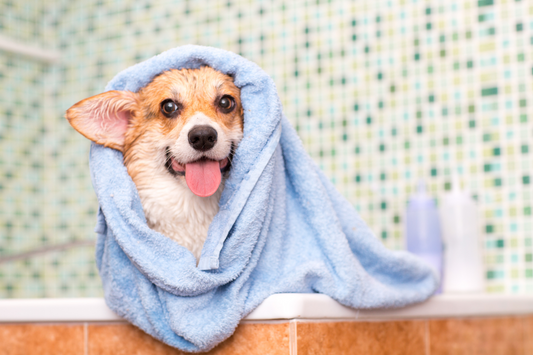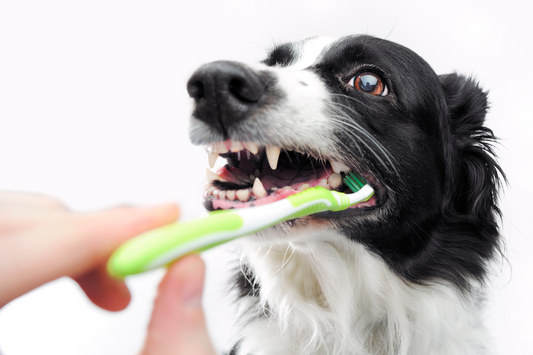Choosing the right dog food for your pets can already take you on a journey of filtering pet food according to your fur ball’s allergies, life stage, health status, and preferences to taste and texture. However, there is another consideration that most pet owners miss in the process: matching dog food nutrients with the size of their pet’s breed.
Yes - not all dog food in the aisles of your favorite pet store is created equal. Feeding proportions meant for smaller breeds won’t be suited for dogs of larger build. Knowing the different nutritional needs of small and large-breed dogs can help you establish a diet for your pet that’s fit for them.
Dogs of Small Breed: Feeding to Keep Up With a Fast Metabolism
Dogs weighing less than 20 pounds even in adulthood qualify as small-breed dogs.
There is danger in associating small dogs with a low-maintenance diet. Small dogs have a higher metabolic rate than larger dogs, making it essential that pet owners feed teacup and toy dogs with more calorie-dense food. Dogs of the smaller breeds can burn their food in just a matter of hours.
Experts recommend that the frequency of feedings for smaller dogs should be between 3 to 4 times a day.
Providing an adequate amount of food for small and toy dogs can prevent a common diet issue in tiny breeds: hypoglycemia.
Signs that tell you it’s time to double your dog’s feedings include:
-
Lethargy
-
Weakness
-
Muscle Tremors
-
Seizures
When left untreated, hypoglycemia can cause death.
Large-Breed Dog Food: Feeding to Keep a Healthy Weight
The considerable misconception about the best diet for large breed dogs is that bigger dogs need bigger servings.
In reality, large-breed dogs need lesser portions than their smaller counterparts. When dogs of big sizes consume too much, they can experience obesity which can cause issues like broken hips and orthopedic diseases.
For a large-breed dog diet, experts recommend giving them food with lower calorie density, and lesser calcium and phosphorus. The frequency ideal for this size is twice-a-day feeding.
Nutrition Needs 101 of Small-Breed Dogs: From Puppy to Adulthood
Are you a doting owner of toy and teacup dogs? Your little furball may already prove that they’re quite an eater. Here’s a quick guide on how you can ensure what you feed them is packed with the nutrients they need at every stage.
For Puppies and Growing Dogs
Puppies may look small, but they have a big appetite and a more significant metabolic rate. Around these stages, it is crucial to make sure your feeding your little dog happens 4 to 5 times in a day.
Smaller puppies need an increased amount of proteins and fats than their larger peers. Carbs and vegetables are a must to keep their energy levels sustained. Meat and not meat byproducts should be the top 1 ingredient to consider. As much as possible, go for grain-free alternatives.
For Adult Dogs
Around this time, diet-borne diseases pop out. Incorporating a healthy diet for your teacup and toy dogs can revert the effects of poor puppy nutrition.
For adult dogs, vets recommend real protein sources like chicken, beef, turkey, quinoa, and lamb. Keep an eye on preservatives and fillers as they can cause obesity. Go for superfood such as sweet potato, flaxseed, and apples.
Nutrition Needs of Large-Breed Dogs: From Puppy to Adulthood
Giant dogs may just need a decent portion, especially if you want to keep your dog’s weight at a healthy level. Making sure each portion is packed with all the nutrients for bigger dogs can help your dog grow without the diet issues.
For Puppies and Growing Dogs
In a nutshell, puppies of larger breeds need to have food that has a lower fat percentage, contains adequate calcium content, a good calcium-to-phosphorus ratio, and includes high-quality protein.
An excess of protein and fat in a large-breed puppy’s diet can make him grow more than what his skeletal state can handle. When your puppy is growing at a rapid rate, he might develop orthopedic issues.
The recommended calcium content should be around 1.5% (or 3 grams in every 1000-cal serving).
If treats are needed, give low-cal treats that don’t contain calcium. Fruits and vegetables are a wonderful option!
For Adult Dogs
The nutrition for larger adult dogs is largely influenced by issues including obesity, bloating, and orthopedic diseases.
Larger dogs are now susceptible to musco-skeletal concerns like arthritis, hip dysplasia, and osteochondrosis. These diseases are a result of heredity and poor nutrition. At this stage, keeping food low in fat and lessening nutrient-dense carbohydrates can help your pets remain full and energized without gaining too much weight.
A high quality, animal-sourced protein can help maintain your pet’s good muscle health.
–
When it comes to proper diet and nutrition for both small and big dogs, keeping track of their food and the nutrients that come with it allows you to feel confident that you’re providing the best food without compromising your pet’s overall health.
In every diet plan for your dogs - whether small or giant - it is highly advised to coordinate with your vet. They can assist you in curating the most ideal, and the safest diet plan for dogs that will give all the benefits, without the problems.




